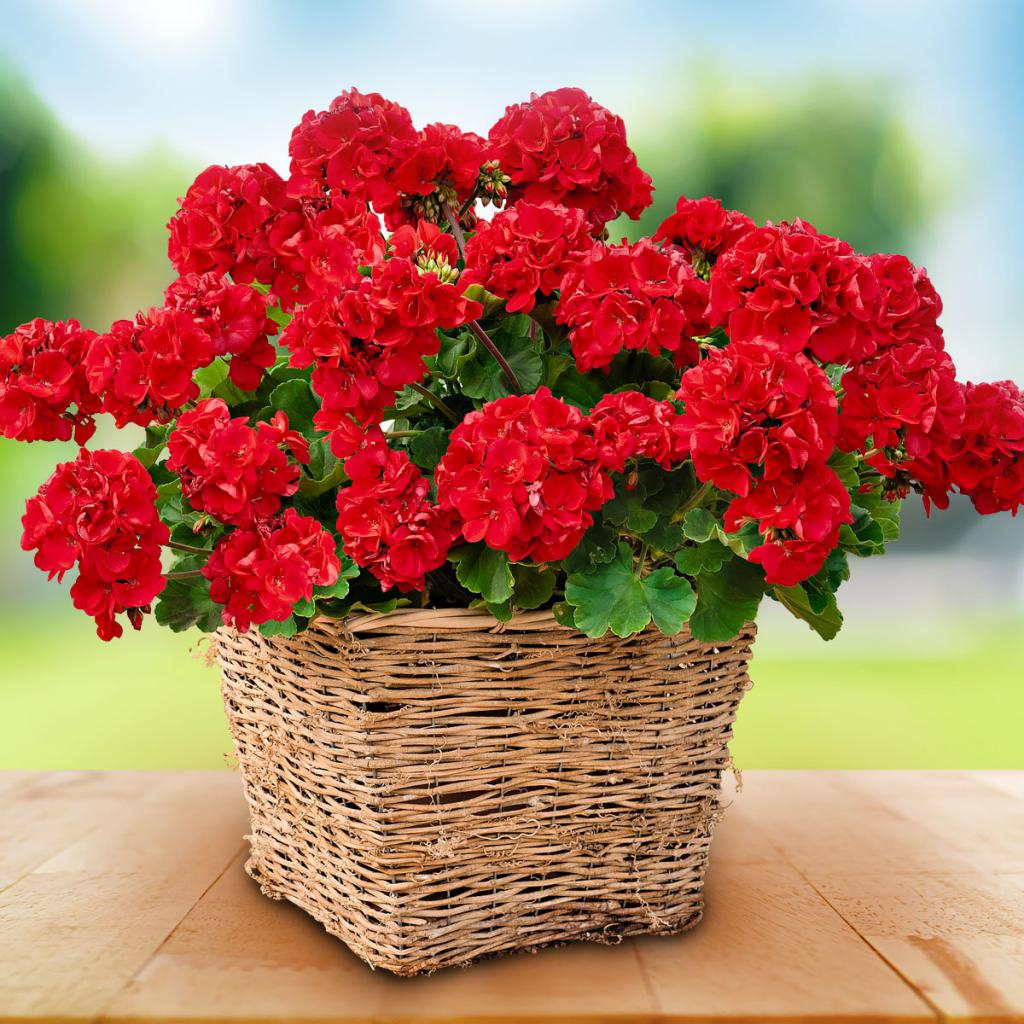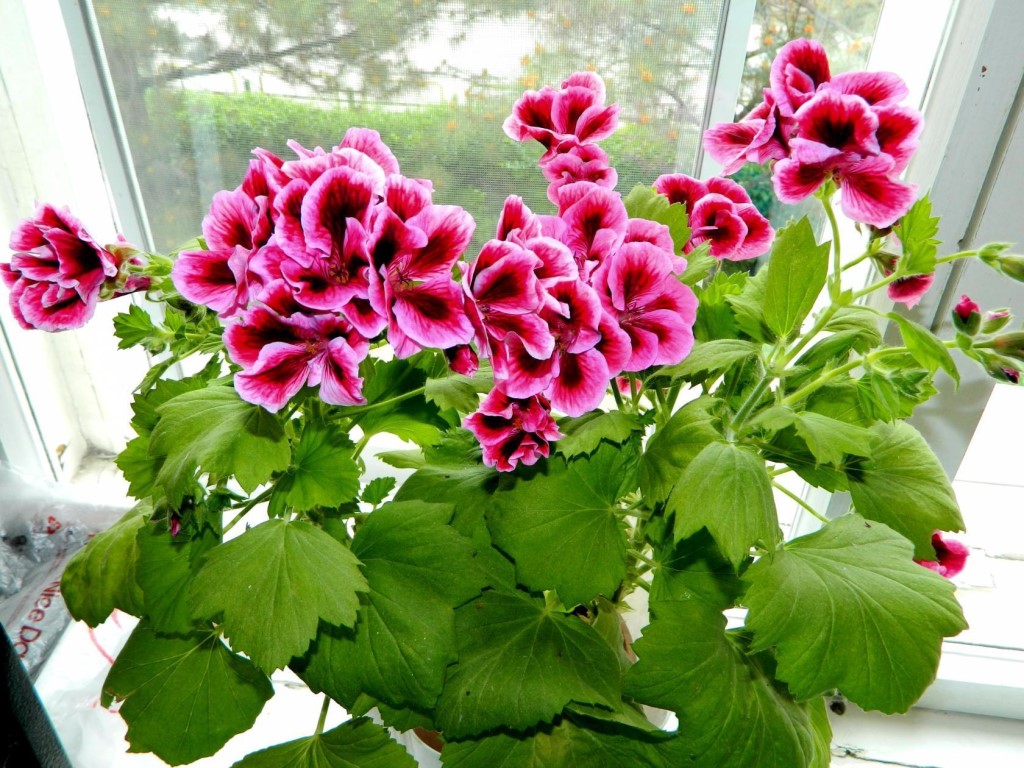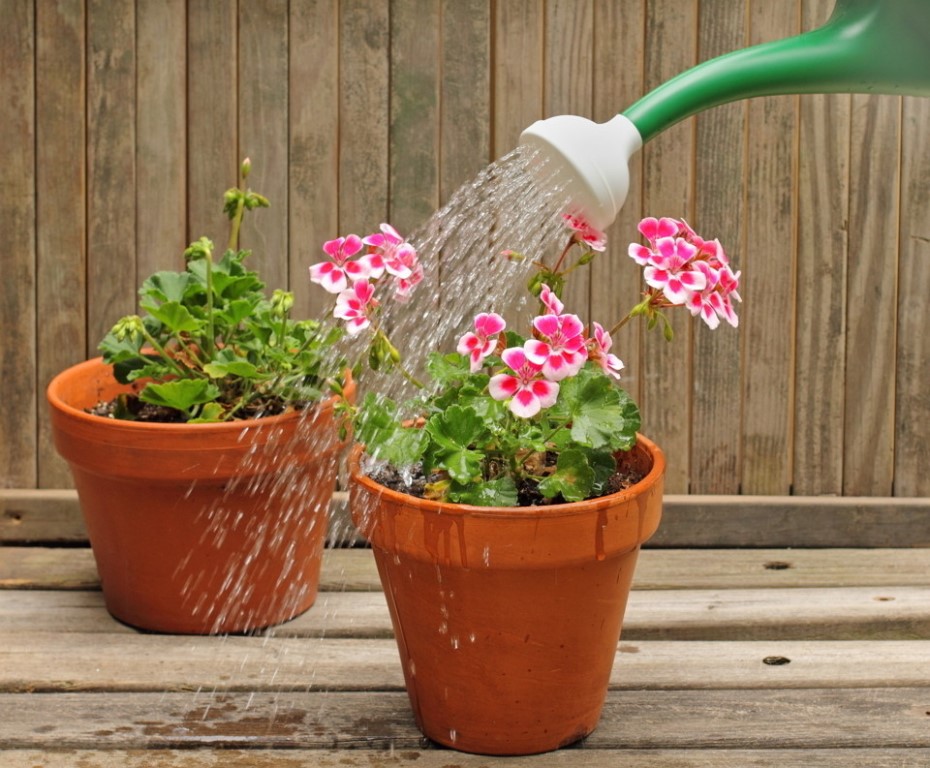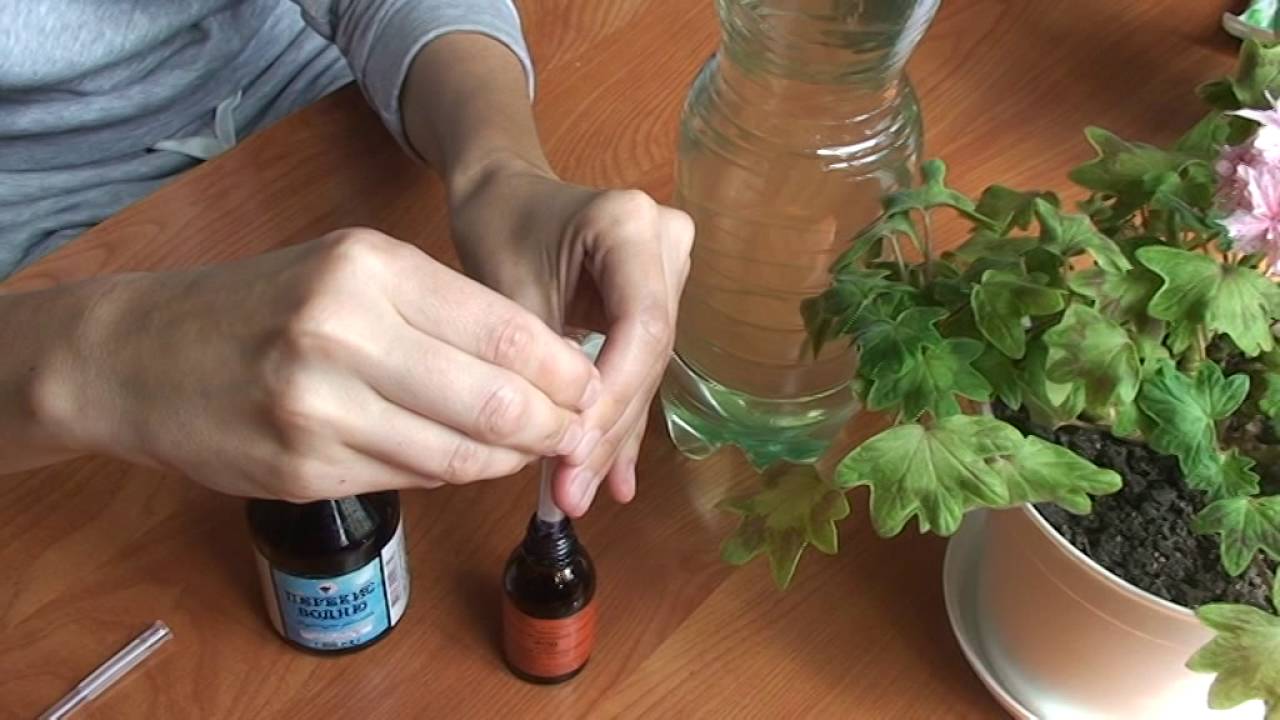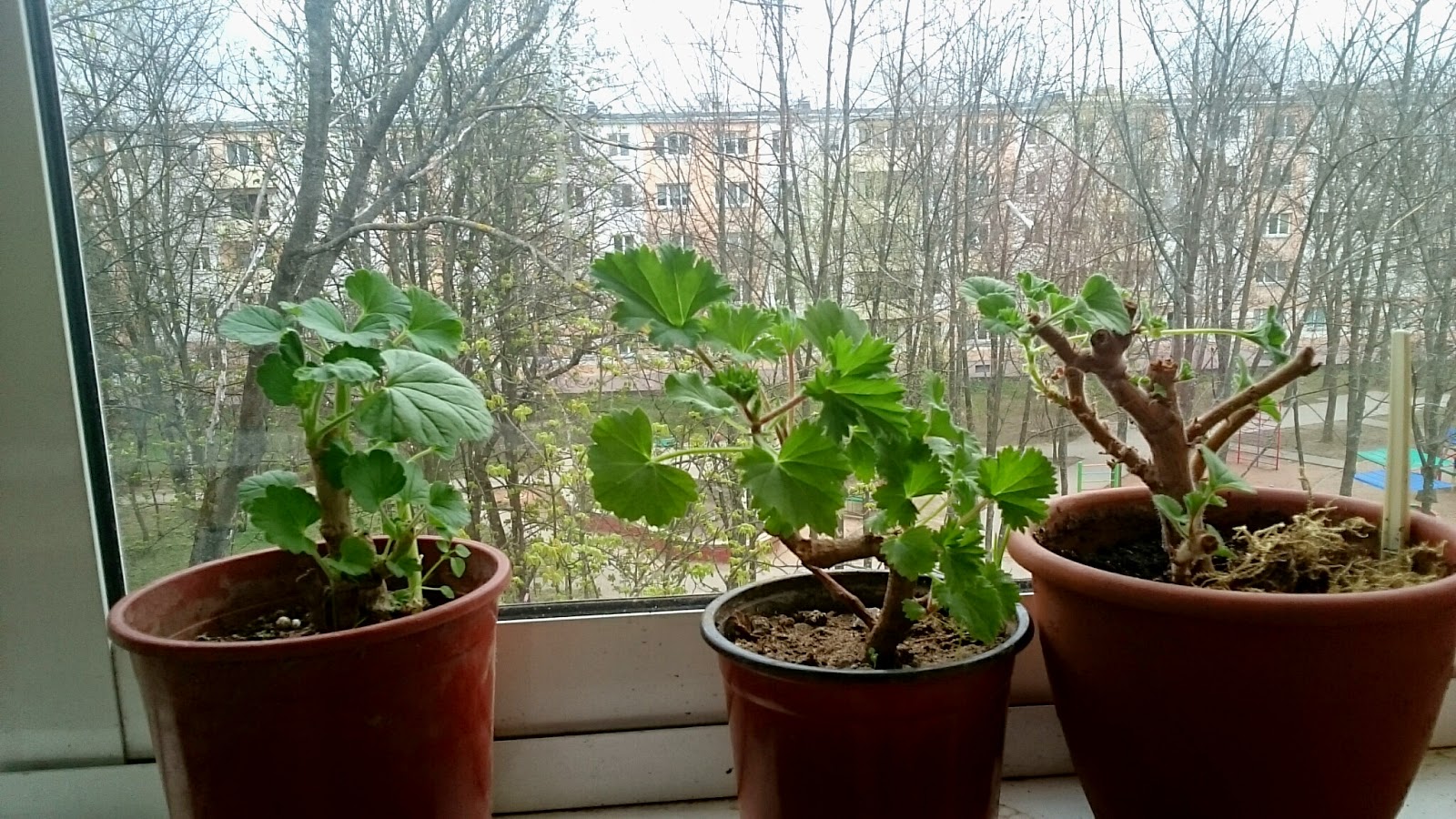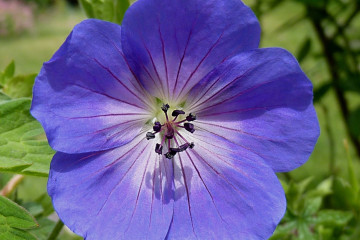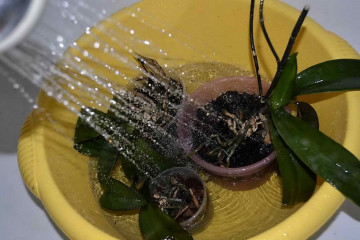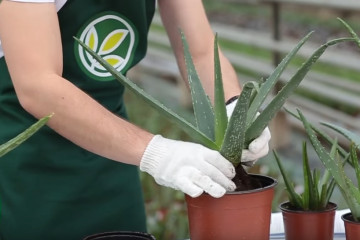Geranium - home care, how to water geranium
Content:
The geranium flower, otherwise called the crane, is a genus of plants belonging to the Geranium family. The category includes more than 400 varieties of crops, which are represented by grasses and bush forms. Of these, about 40 have taken root well in Russia. In the wild, the plant is found almost all over the world.
The name "geranium" is of Greek origin and means "crane" in translation. This name was not given by chance - the fruits of the flower are very similar to the beak of a crane. Geranium is successfully grown both in flower beds and at home. Pelargonium propagation is carried out in three ways: cuttings, leaves and seeds. The flower retains its decorative properties for 4-5 years, with proper care this period increases to 10 years. A characteristic feature of geranium is the presence of dark green leaves with a fluffy surface. The article will discuss what is geranium home care, flowering, wintering.
Home care
Many novice florists are interested in the question of how to care for geraniums. This is a completely unpretentious culture, with the exception of some especially decorative varieties. Even an amateur who does not have much experience in this matter can easily cope with the task.
Nevertheless, for the successful cultivation of a flower, certain rules and recommendations must be followed. Caring for pelargonium at home must meet the following requirements.
Temperature
In winter, the optimal performance is 14 degrees on average. Therefore, it is best to place the pot on a windowsill or in another cool place. In summer, indoor geranium develops well at a temperature of about 27 degrees. Like most houseplants, the flower does not tolerate cold drafts. Geranium perceives ordinary airing normally.
Lighting
Geranium doesn't like shade. In order for the flowers to be bright and the color of the leaves to be saturated, the bush should be on a well-lit windowsill. In this case, the pot must be periodically turned so that the bush does not stretch out and turns out to be as even and neat as possible. In winter, geraniums need additional lighting. A special phytolamp will help to achieve such conditions.
Since the flower belongs to light-loving plants, a short exposure to the direct sun is allowed.
Watering
Geranium is a moisture-loving crop, so it should be watered often and abundantly in spring and summer. In this case, the water in the sump should not be allowed to stagnate. Moistening is carried out as the soil dries. To prevent cracks from appearing on the surface of the earth, it is recommended to pour water into a special tray. The liquid should be at room temperature (very cold water can cause root rot).
Instead of filtered water, you can use melt or rainwater, which is cleaner and softer than sewage.
Before watering geraniums, it is necessary to provide the flower with high-quality drainage: so that liquid does not accumulate in the pot, the bottom of the container must have a special hole.
Spraying
Geranium does not require special moisture, however, in winter, when heating devices are working, it is recommended to spray the flower with purified water (ordinary water leaves white streaks on the leaves). Frequent spraying or wiping of the leaves is impractical and even harmful for geraniums - the leaves darken and dry out.
Humidity
The flower does not require high humidity.
Priming
Planting geraniums is carried out in a simple universal soil, which can always be purchased in the department for flower growers. If you do not want to buy soil, preparing it yourself will not be difficult. For this you will need:
- Turf;
- Leafy land;
- Sand;
- Humus.
The components are taken in the following proportions: 1: 1: 0.5: 1.5.
A drainage layer is charmingly laid at the bottom of the container.
Top dressing
Geranium does not need intensive feeding - in summer it is enough to apply fertilizer once every 2-3 weeks, in winter - once every 2-3 months. The most effective will be universal fertilizers or feeding for flowering plants. These include potash mixtures.
In winter
They begin to prepare the plant for the resting phase in the fall. The container with the flower is transferred to a cool, sufficiently lit place (without access to direct sunlight). The air temperature should vary from 10 to 12 degrees. The frequency of watering is reduced, dried and yellowed leaves are cut off. In winter, flower pots are placed on the northern windowsills or on the insulated balcony. In order for the daylight hours to be at least 12 hours, it is artificially extended using a phytolamp. You can keep flowers on specially prepared shelves with lighting. The use of phytolamps allows you to achieve positive results in the form of:
- Preservation of the decorative properties of the bush;
- Formation of bright and large leaves;
- Intense and long-lasting flowering in the next season;
- Uniform growth of shoots.
During the dormant period, the flower should not develop. The growth of geraniums is suspended due to cool conditions of detention, a reduction in watering and the abolition of fertilizing.
In winter, in no case should moisture stagnation be allowed, otherwise the geranium can get sick with black rot. This pathology cannot be treated, so the flower can only be destroyed.
When and how it blooms
High-quality care of geraniums ensures bright and long flowering.
Description of flowers
Geranium flowers are quite large in size and vary in color: depending on the species and variety, they can be purple, blue, white or purple (it is interesting that the scarlet hue does not occur at all). Collected in racemose inflorescences of 1-3 pieces, but lonely growing flowers are also more common. Each of them has 5-8 rounded petals, which are located on a flat 5-leaf cup.
Flowering period
The usual time frame is approximately 40 days. Flowering begins in May and ends in July. During the summer season, geraniums often bloom a second time. With proper care and warm enough weather, flowering can begin in the first days of April.
The timing and duration of this period is determined by several factors:
- Climatic and weather conditions;
- The natural rhythm of geranium development;
- The use of various procedures: pruning, watering, fertilizing.
Important to remember! These factors can both stimulate flowering and ruin the whole process. The result will depend on the person.
Flowering care
It often happens that geraniums do not bloom for the entire summer season, or they bloom, but very poorly. Special agricultural techniques for pruning a bush will help prevent this problem:
- In October, as soon as the geranium has completely bloomed, the plant should be planted in fertile soil, and the shoots should be cut, leaving 1/3 of their height.
- After the flower takes root, it should take 2 weeks. Then pelargonium is transferred to a room where the air temperature is about 5 degrees. In such conditions, the culture should be for about a month.
- The frequency of watering is significantly reduced. Excessive moisture at low temperatures will lead to the development of fungal disease.
- In the spring, when the geranium begins to grow, you will need to make one corrective pinch.
Another way to achieve lush blooms is to grow pelargonium in tight pots. An important condition is the presence of nutrient-rich soil. To do this, you should regularly feed the crop during the period of its active growth (that is, from March to the end of August). The frequency of feeding is 1 time in 10-14 days. In the spring, during the growth of shoots, the plant should be fertilized with mineral mixtures with a high nitrogen content. As soon as the buds appear, the potassium dosage can be increased.
Feeding options for lush flowering, as well as to improve the condition of the foliage:
- To make nitrogen better absorbed, iodine is used. Also, thanks to this microelement, the foliage acquires a rich color, becomes more resistant to diseases such as late blight and powdery mildew. To prepare the nutrient mixture you will need:
- iodine;
- warm water.
The ratio of ingredients is 1 drop of a pharmacy product per 1 liter of water. For one adult plant, 50 ml of solution is enough.
- Fertilizer made from wood ash. This component contains phosphorus and potassium, which are easily absorbed by plants. To make top dressing, you will need 1 tablespoon of ash per 1 liter of water. One adult specimen accounts for 100 ml of the mixture.
- Spraying the bush with a solution of magnesium sulfate at a concentration of 1/4 teaspoon per 1 liter of water. This ingredient can be purchased at a pharmacy. You need to fertilize the flower once every 3 weeks. Magnesium sulfate is beneficial in promoting the production of chlorophyll. Thanks to this, the foliage acquires a rich color. This type of fertilizer is not suitable for varieties with variegated greenery.
Closer to autumn, when the inflorescences stop forming, the crown of the geranium should be shortened to form a bush. If the procedure is ignored, the plant will lose its decorative effect, including the quality of flowering. Before wintering, it is also necessary to remove dry leaves and inflorescences.
One of the most unpretentious crops is pelargonium, caring for it is not difficult even for novice florists. The plant does not need to be repotted frequently, it easily tolerates an arid climate and lack of moisture, as well as direct sunlight. The main thing to remember is that the flower reacts very badly to excessive moisture and exposure to cold drafts. In order for a culture to delight with its beauty and aroma for a long time, it is necessary to comply with the basic requirements for caring for it and try to protect it from negative factors.
